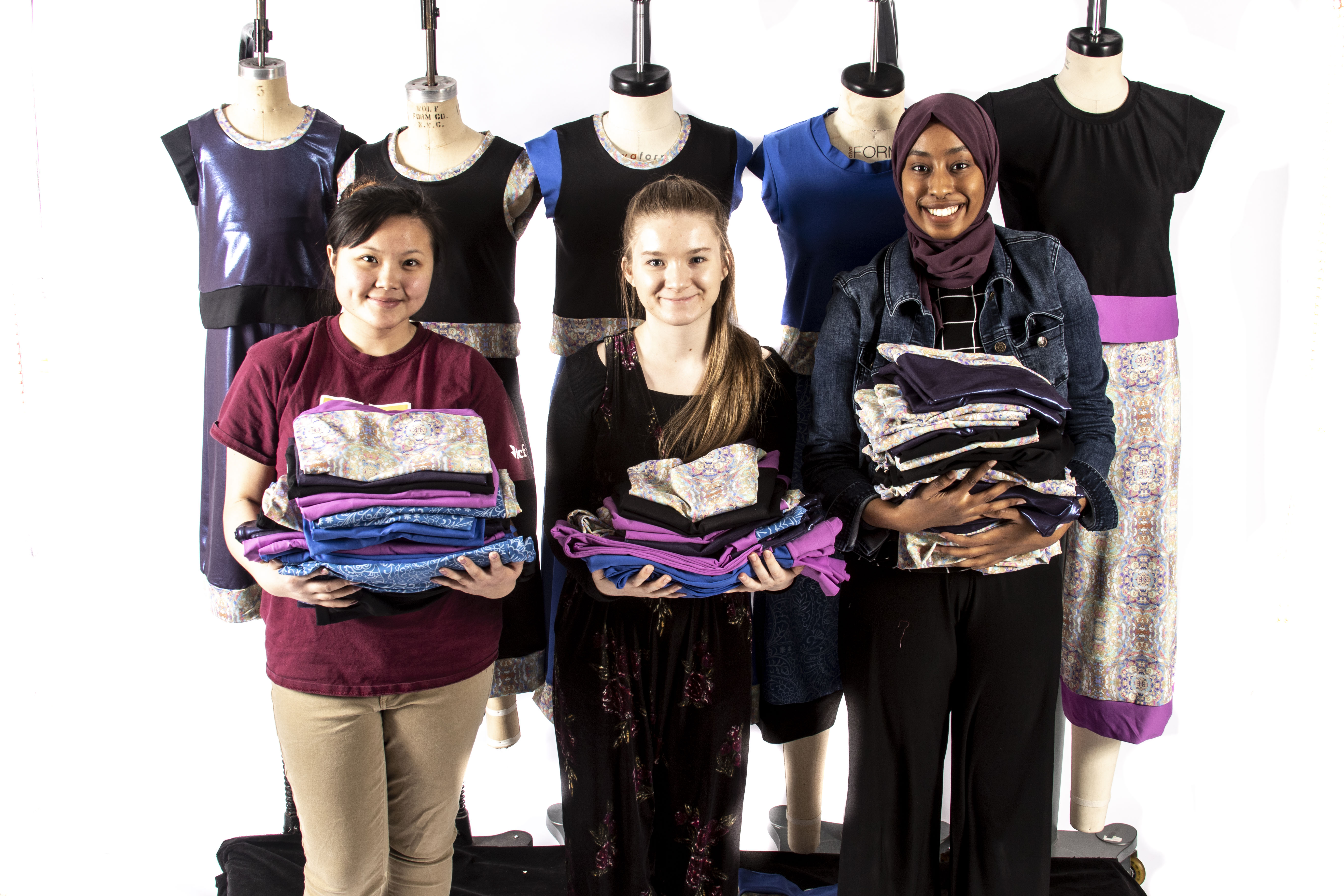This fall, the students in Professor Lucy Dunne’s technical apparel design studio course will once again create new garments for vulnerable girls in Uganda. This is made possible only through the support of alumni and friends of the College of Design, whose donations help purchase materials and cover shipping costs to the girls at Blue House Uganda.

With a focus on teaching students about garment production, Dunne’s class takes students through the entire product design process, from conception to final production. “A lot of our students come in thinking that they would like to have their own line. If they were to start from the ground up, this class shows them exactly what they would be doing,” said Dunne.
This year the students will be designing garments for the girls of Blue House Uganda using sketches created by the girls themselves. Sewing and clothing design is a career option that girls at Blue House Uganda are encouraged to pursue. By showcasing the transition from a rough sketch to a finished product, Dunne’s class hopes to help teach the girls about jobs and skills in the apparel industry.
Using the sketches as inspiration, the apparel design students will each create their own designs. “At the end of the sample fitting, we select down to a smaller number of products and the students are assigned to small teams who then focus on bringing one garment all the way through to production. Each group makes 40-45 copies of each thing in two rounds of production,” explained Dunne.
Even if students don’t end up working for a small clothing line or business, the coursework is modeled to different scales to give students a deeper understanding of product development and to experience what it is like to work as both the laborer and the designer. “Students in the past have said that this class pushed them to expand their knowledge of what designers really do and how design and the garment industry can be a force for good in the world. The experience is an unparalleled chance to design and operate a small production facility – skills that our students can carry forward to continue making a difference after graduation, by designing products that improve lives and create jobs,” said Dunne.
For the girls at Blue House Uganda the new, well-made clothing is a very special gift. For many of them, the clothing made by College of Design apparel design students is the first new clothing they’ve ever received. “We’ve been making clothing for Blue House for six or seven years. We’ve made play clothes, church dresses, sleepwear, rain ponchos, and sweatshirts. The girls are always so excited to receive them,” concluded Dunne.
Our students are designing to make a difference in the world and you can help. Now through October 16, the College of Design has a goal to raise $5,000 to cover the costs of materials and the cost of shipping final products to the girls in Blue House Uganda.
Your gift makes a difference in this project:
- $20 covers the costs of prototyping a garment.
- $50 provides materials to produce five garments in the classroom.
- $250 funds the printing of garment patterns.
- $500 covers the cost of a rotary knife that cuts multiple garments at once.
- $1,000 covers the cost of the international shipping to Blue House Uganda
- $2,000 buys a new, high-efficiency industrial sewing machine to speed up production.
To become more sustainable, Winsome Goods founder Kathryn Sieve (B.S. ’11, Apparel Design) knew she had to find a way to incorporate the leftover fabric scraps from her products into usable items. After discussing the problem with instructor Lindsey Strange (Apparel Design) it became clear that it was the perfect research project for students to tackle in the Apparel Studio I.
With the highest maternal mortality ratio in the world, Sierra Leone is one of the most dangerous countries for women to give birth.¹ Architecture graduate student Gauri Kelkar’s final project is helping to change that.








